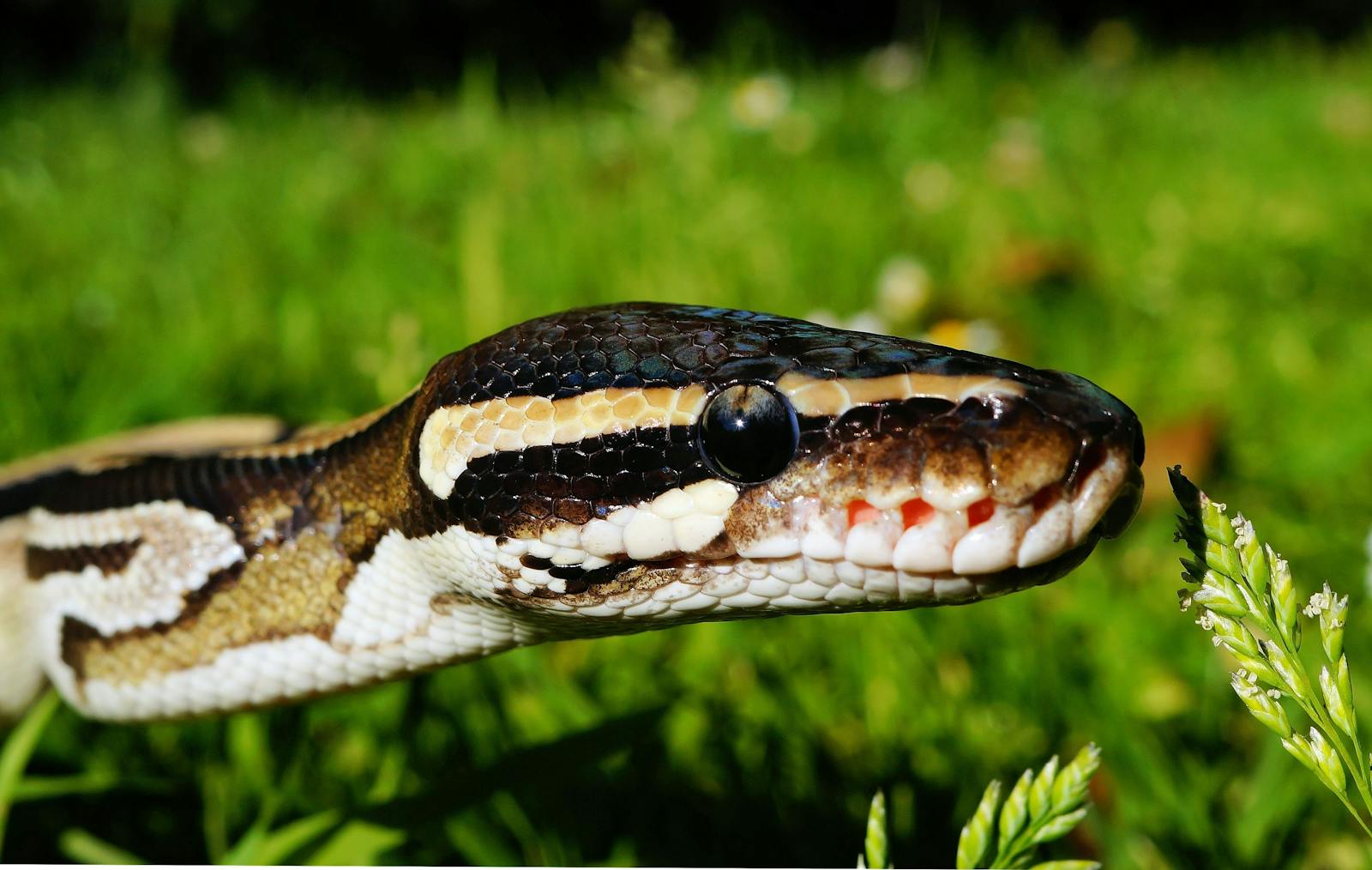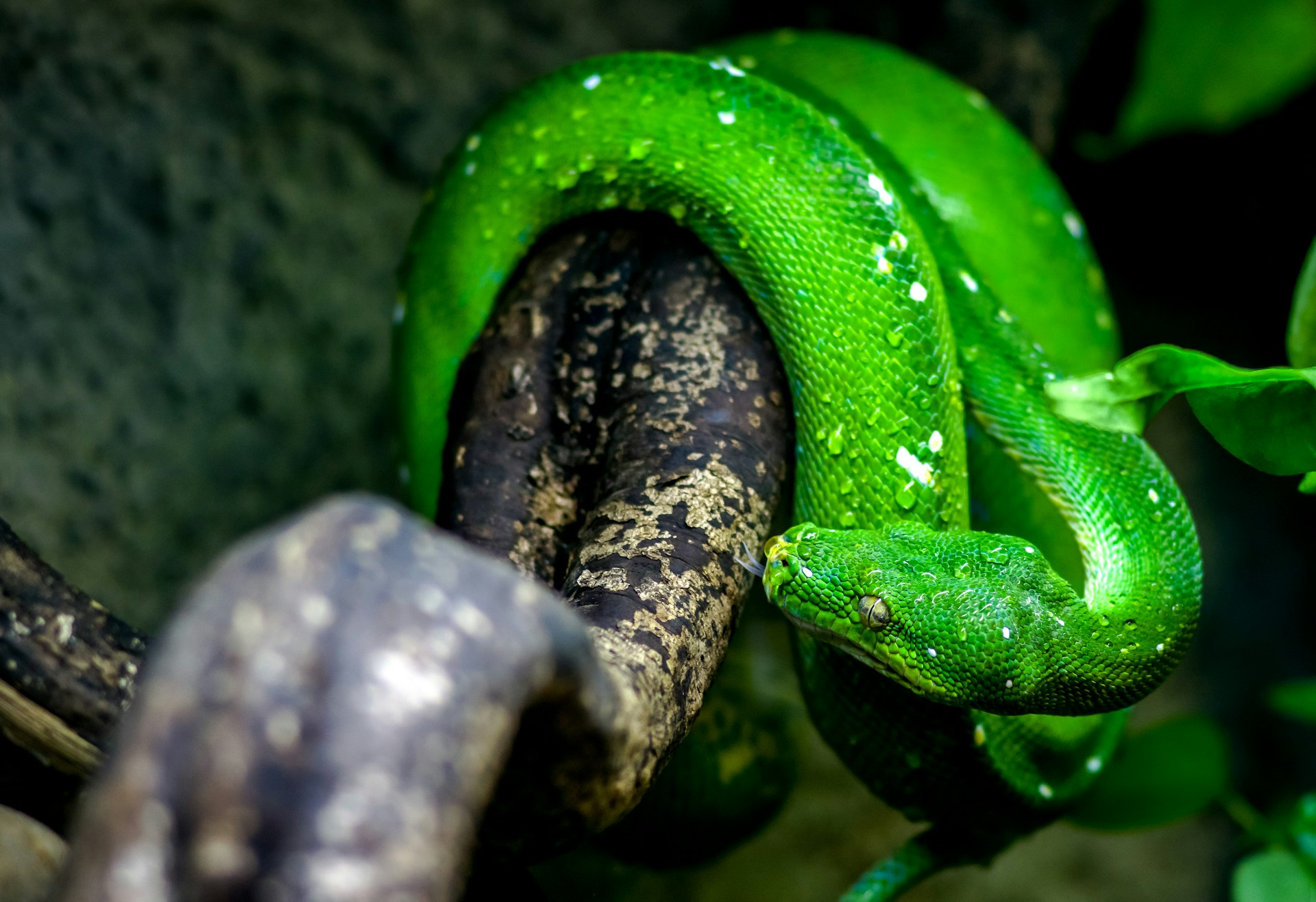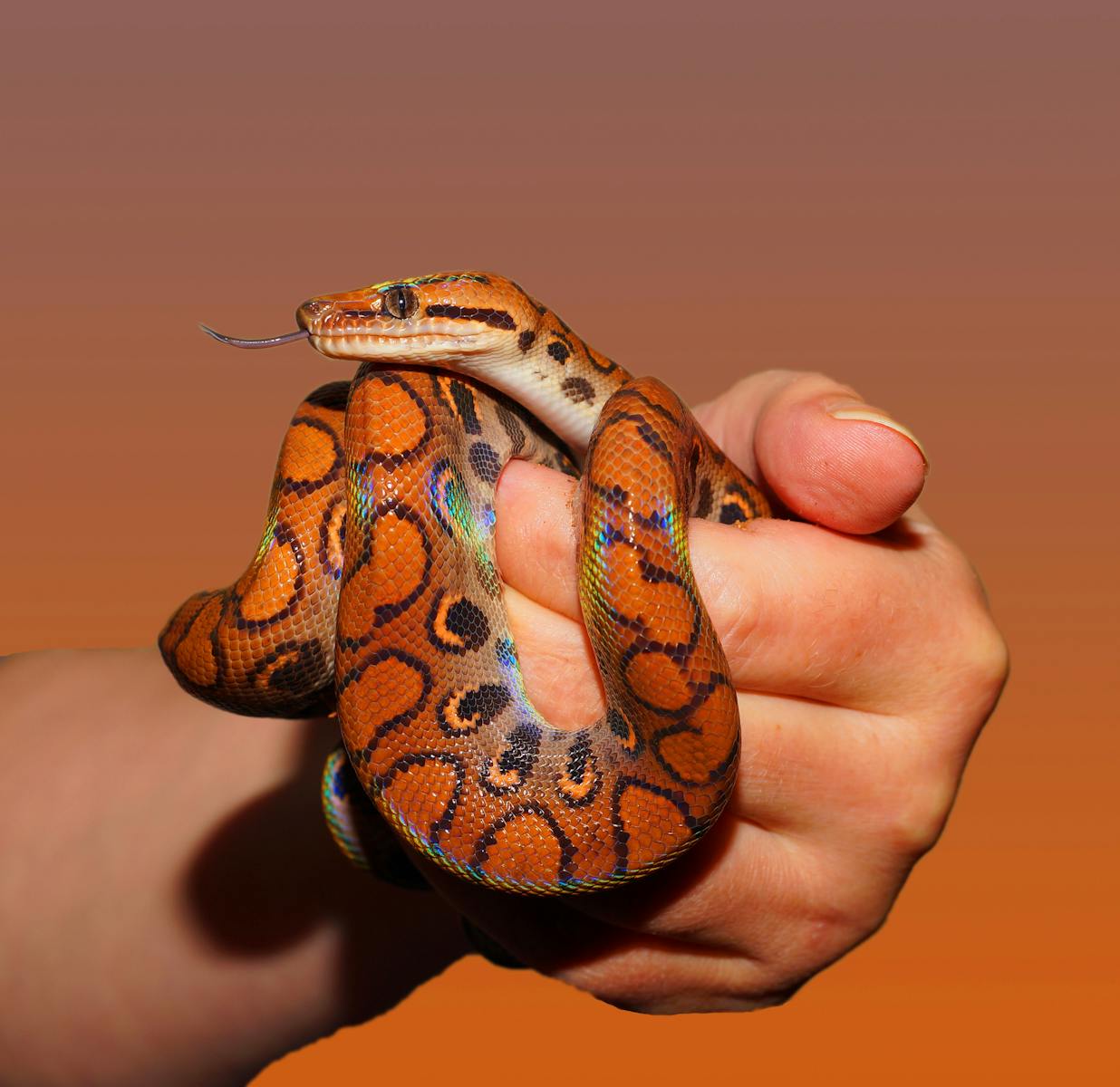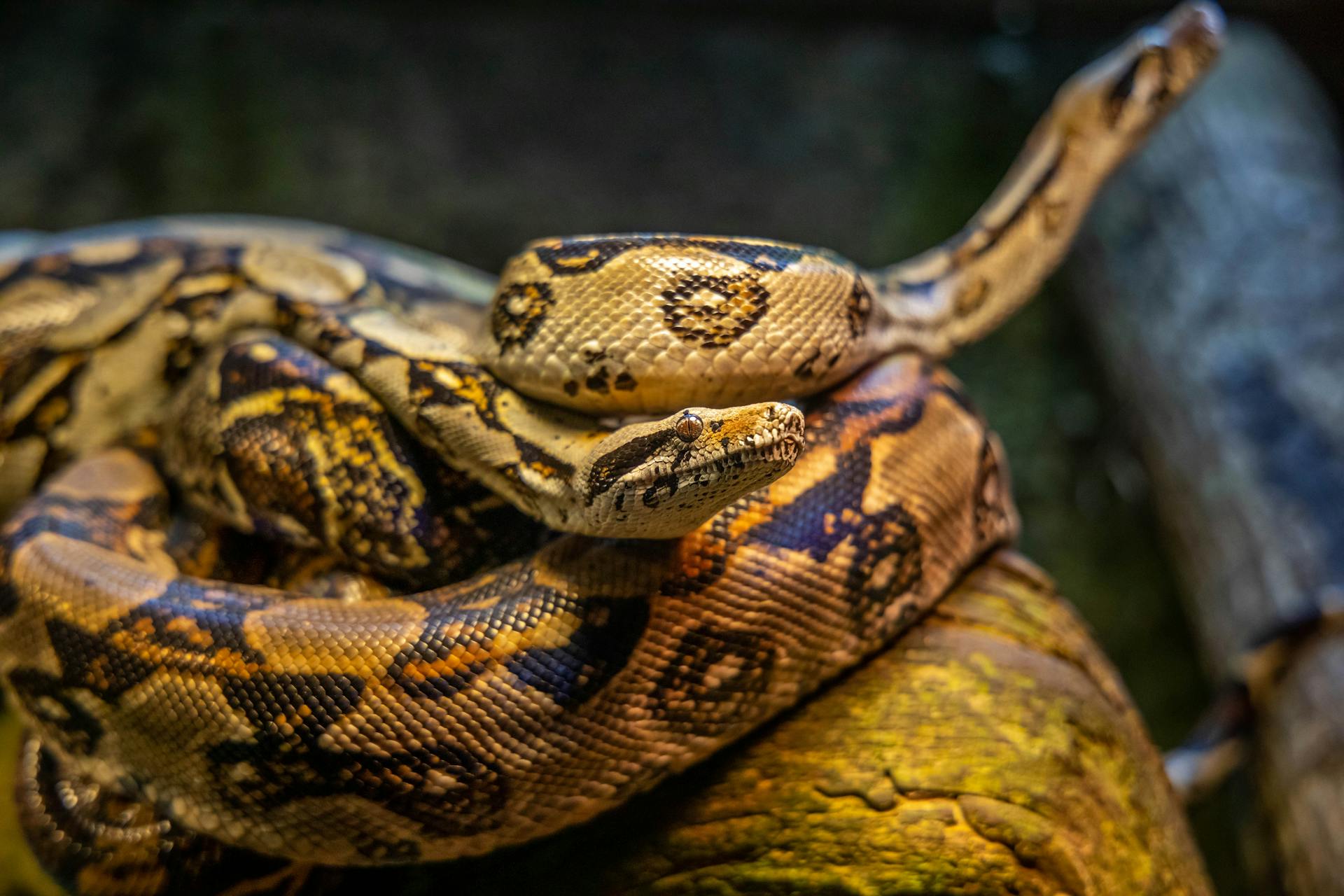Creating the perfect habitat for your non-venomous snake involves many considerations, but perhaps none as fundamental as selecting the right substrate. This bedding material lines the bottom of your snake’s enclosure and serves multiple crucial functions – from maintaining proper humidity levels to facilitating natural behaviors like burrowing. With dozens of options available in pet stores and online, choosing the ideal substrate can seem overwhelming. This comprehensive guide explores the best substrate options for non-venomous snake enclosures, examining their benefits, drawbacks, and suitability for different species to help you make an informed decision that will keep your serpentine companion healthy and happy.
Understanding the Importance of Proper Substrate

Substrate serves as more than just aesthetic flooring for your snake’s home—it functions as a critical component of their overall well-being. The right substrate helps maintain appropriate humidity levels, which is essential for proper shedding and respiratory health in snakes. It also provides a medium for natural behaviors like burrowing and hiding, which reduces stress and promotes psychological well-being. Additionally, quality substrate aids in waste management by absorbing or allowing for the easy removal of urates and feces, helping to keep the enclosure clean and hygienic. Finally, substrate contributes to temperature regulation, as some materials retain heat differently than others, creating microclimates within the enclosure that allow your snake to thermoregulate effectively.
Newspaper and Paper Products
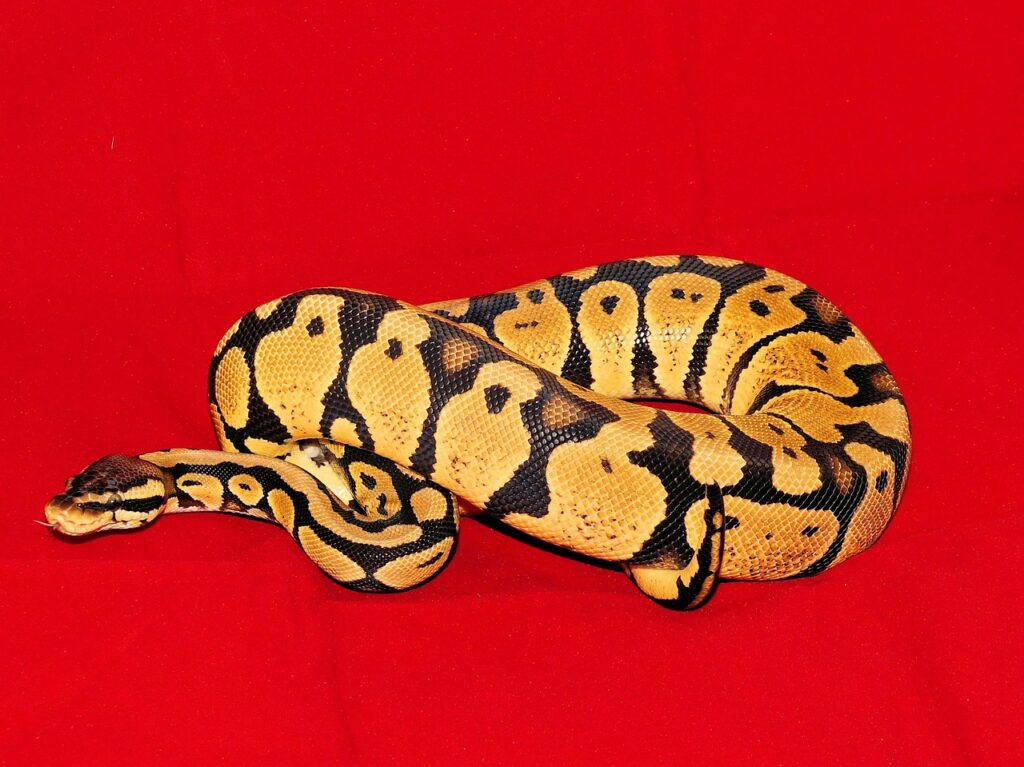
Newspaper and paper products represent some of the most economical and practical substrate options for snake keepers, particularly beginners or those housing snakes temporarily. These materials offer exceptional ease of cleaning—simply remove the soiled sections and replace them with fresh paper when needed. Paper products are completely dust-free, making them ideal for snakes with respiratory sensitivities or those recovering from respiratory infections. Unprinted paper or paper towels are preferable to newspaper, as some keepers express concern about potential toxicity from printing inks, though this risk appears minimal with modern soy-based inks. The main drawback of paper substrates is their inability to hold humidity well, making them less suitable for species requiring higher humidity levels without supplemental humidifying methods.
Aspen Shavings
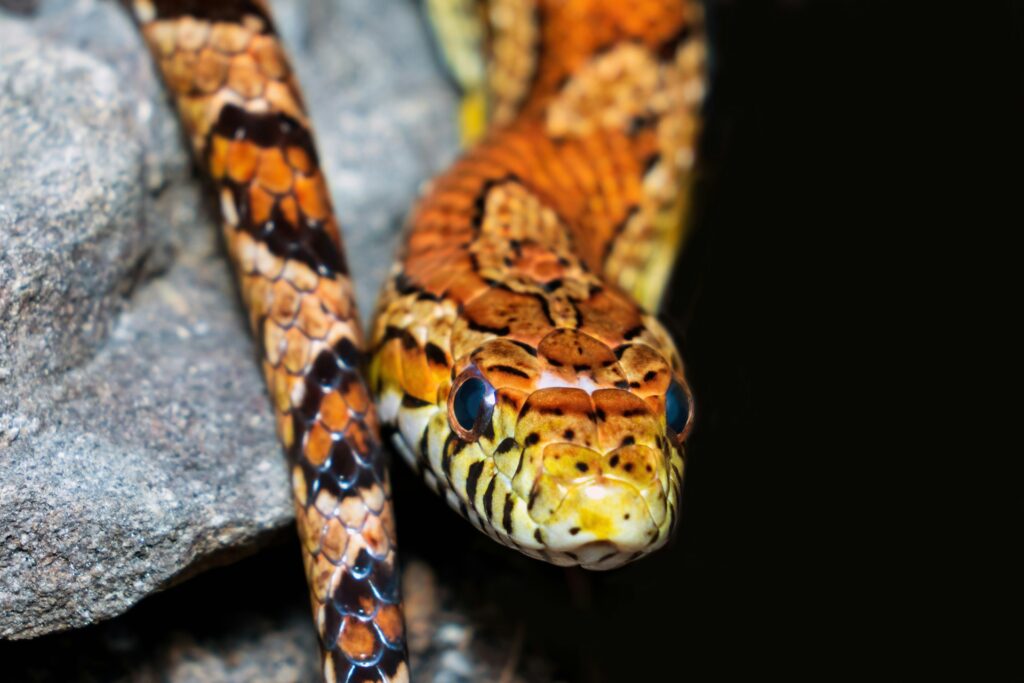
Aspen shavings have earned their popularity among snake enthusiasts for several compelling reasons. This lightweight, natural wood substrate is particularly well-suited for species that enjoy burrowing, such as corn snakes, king snakes, and milk snakes, as it holds tunnels and burrows exceptionally well without collapsing. Unlike pine or cedar, aspen lacks aromatic oils that can be harmful to reptiles, making it a safe wood-based option. Aspen excels in environments requiring lower humidity levels, as it remains relatively dry and helps prevent scale rot in desert species. The drawback to aspen becomes apparent when moisture is introduced—it tends to mold quickly when wet and doesn’t contribute to humidity maintenance, making it unsuitable for tropical species like ball pythons without significant modification to the enclosure setup.
Cypress Mulch
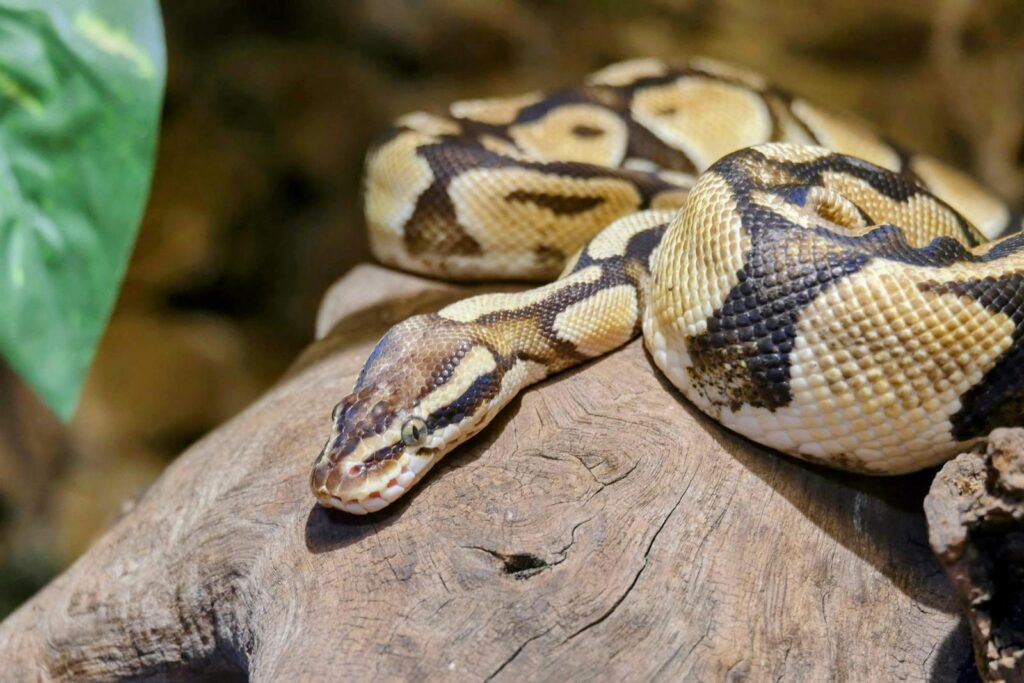
Cypress mulch stands out as an excellent substrate choice for snake species requiring moderate to high humidity levels, such as ball pythons, boa constrictors, and many rat snake species. This natural wood product strikes an impressive balance between moisture retention and resistance to mold growth, creating a healthier environment for humidity-loving snakes. The texture of cypress mulch allows for natural burrowing behaviors while being gentle on your snake’s scales and belly. Its natural appearance contributes to a more aesthetically pleasing, naturalistic enclosure design that mimics the snake’s natural habitat. When purchasing cypress mulch, keepers should seek products specifically marketed for reptiles or organic garden use to avoid potentially harmful additives or treatments that might be present in general landscaping products.
Coconut Husk Products
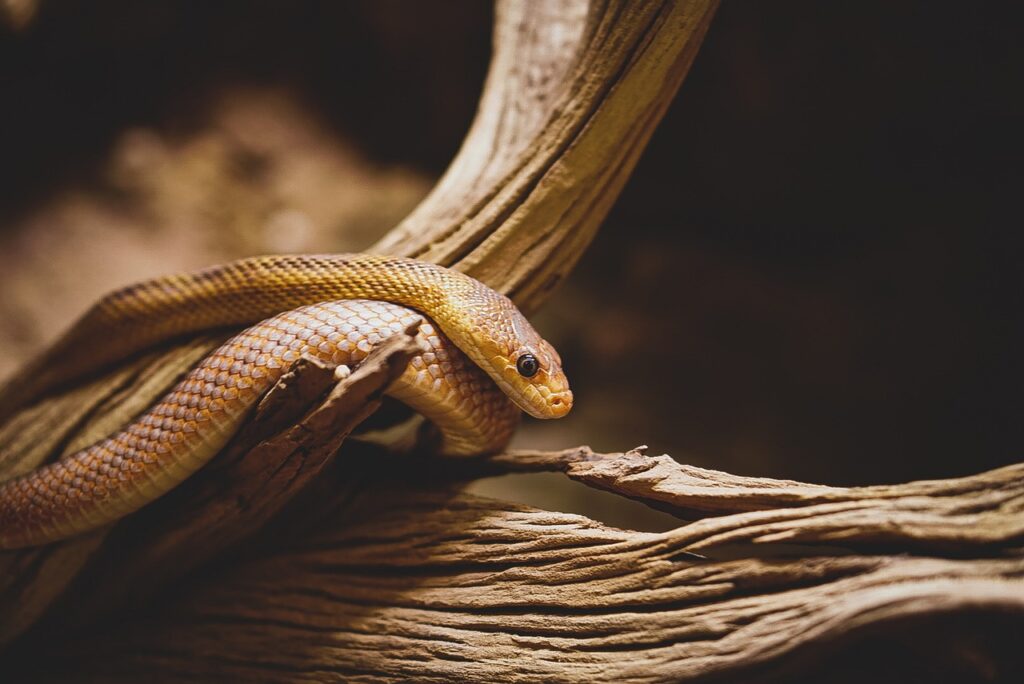
Coconut-based substrates have revolutionized reptile keeping with their exceptional versatility and performance for tropical snake species. Products like coconut husk chips (often sold under brand names like ReptiChip) and compressed coconut fiber (like Eco Earth or coco coir) excel at maintaining high humidity levels critical for species from rainforest environments. These substrates can absorb and gradually release moisture, creating stable humidity without becoming waterlogged or moldy. Coconut products are naturally resistant to bacterial growth and have a neutral odor that effectively helps control waste smells in the enclosure. The substrate’s fine to medium texture allows snakes to burrow comfortably while being gentle on their scales. Additionally, coconut-based substrates are sustainable and environmentally friendly, being made from the renewable byproducts of coconut processing rather than harvested trees.
Orchid Bark
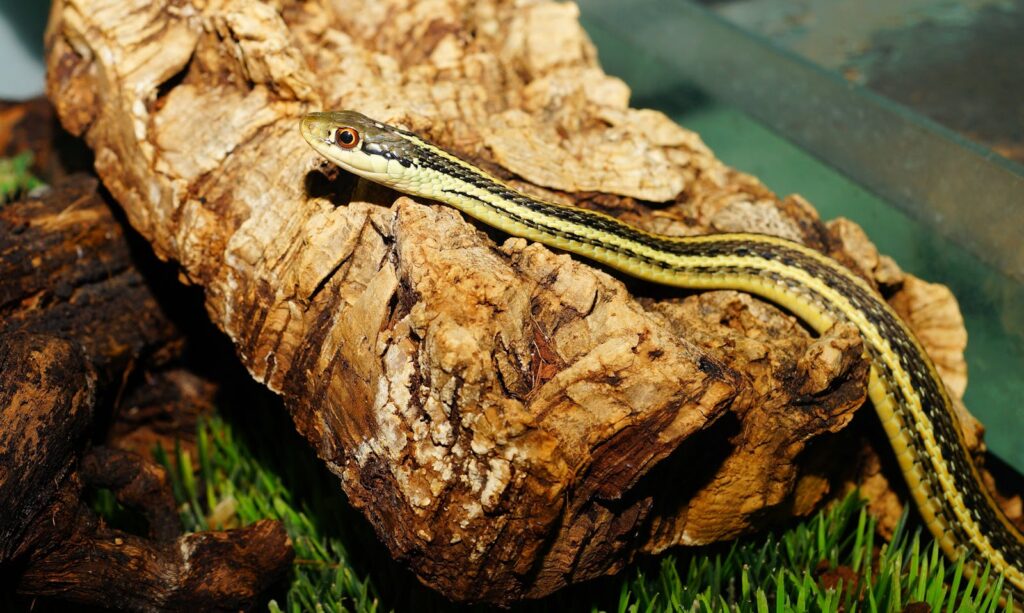
Orchid bark offers an excellent substrate option for keepers of larger snake species or those requiring specific humidity conditions. This substrate consists of finely shredded or chunked fir bark, originally developed for orchid cultivation but well-suited to reptile enclosures. The larger particles of orchid bark create beneficial air pockets throughout the substrate, promoting healthy airflow while still retaining humidity effectively. This characteristic makes it particularly valuable for preventing scale rot in larger, heavier snakes that might otherwise press against consistently damp substrate. Orchid bark’s durability means it breaks down slowly, often lasting months before requiring replacement, making it economical despite its higher initial cost. When using orchid bark, spot cleaning becomes straightforward as waste typically sits on top of or between the bark pieces rather than being absorbed into the substrate.
Reptile-Specific Bioactive Substrates
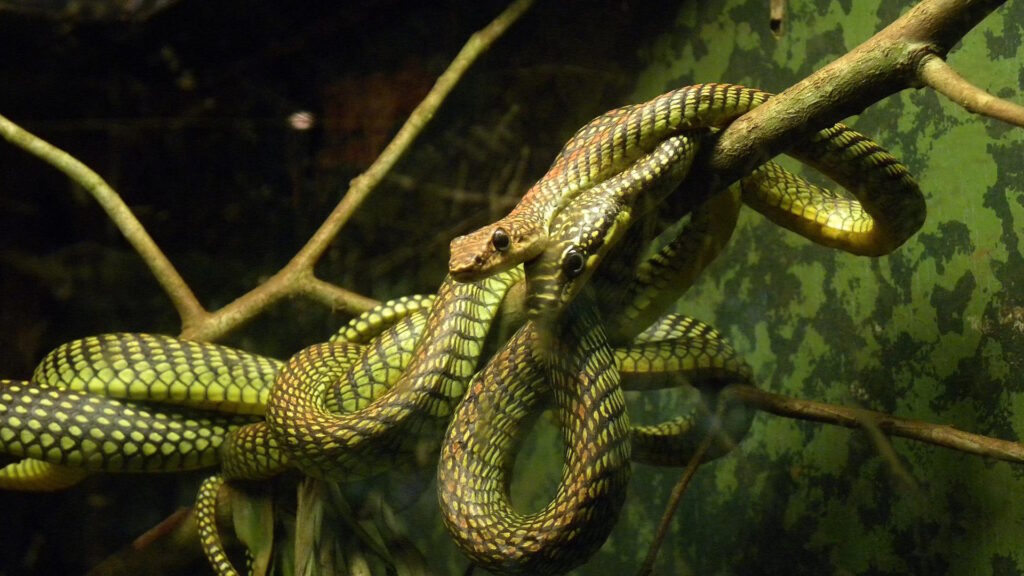
Bioactive substrates represent the cutting edge of reptile husbandry, creating mini-ecosystems that more closely mimic a snake’s natural environment. These specialized substrate mixes typically combine soil, sand, bark, moss, and other organic materials with live microfauna like springtails and isopods that act as a clean-up crew. In a properly established bioactive setup, these beneficial organisms consume snake waste, shed skin, and decaying plant matter, breaking them down into nutrients and significantly reducing the need for regular substrate changes. Bioactive substrates excel at maintaining stable humidity levels naturally through the water cycle created within the enclosure ecosystem. While requiring more initial investment and setup time, bioactive enclosures typically require less frequent maintenance once established and provide enrichment through a more naturalistic environment. These systems are particularly well-suited for semi-arboreal species that benefit from a natural forest floor environment.
Hemp and Coconut Fiber Blends

Hemp and coconut fiber blends have gained popularity as premium substrate options that combine the best properties of multiple materials. These mixed substrates typically offer superior moisture retention while maintaining excellent structural integrity, preventing collapse even when damp. The natural antimicrobial properties of hemp help reduce odors and inhibit the growth of harmful bacteria in the enclosure. Many commercial blends are specifically formulated to promote healthy burrowing behavior while being gentle on a snake’s sensitive ventral scales. These blends typically arrive slightly compressed and expand significantly when moistened, making them economical despite their premium price point. The balanced properties of these mixed substrates make them suitable for a wide range of species with moderate humidity requirements, though specific ratios might be adjusted for species needing particularly high or low humidity.
Substrates to Avoid for Snake Enclosures
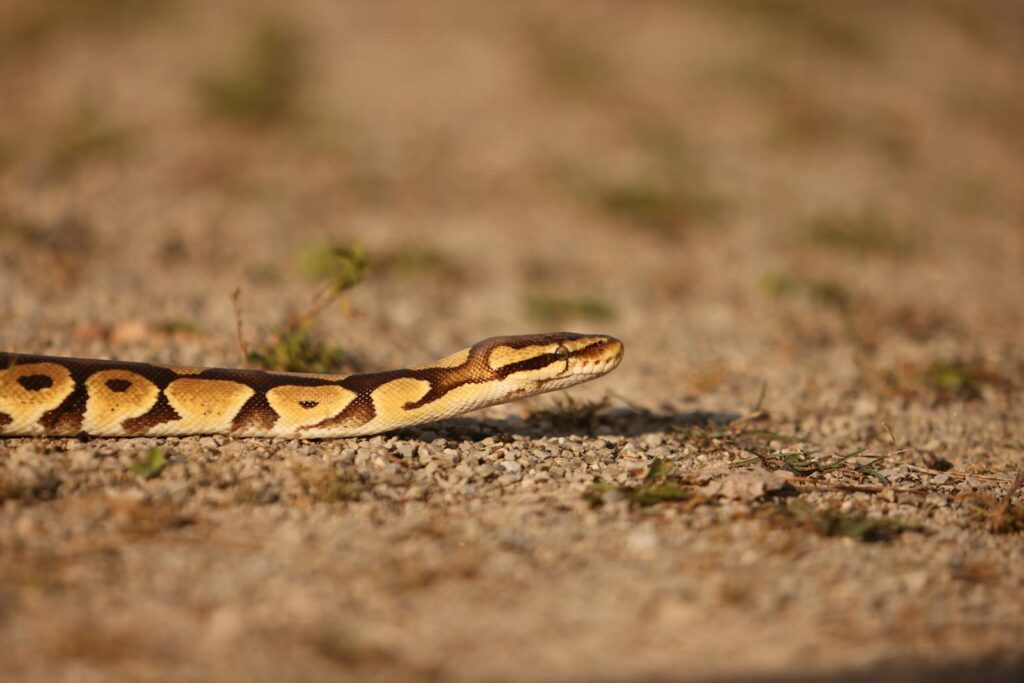
Several common substrates should be avoided despite their widespread availability due to potential health risks they pose to snakes. Cedar and pine shavings contain aromatic phenol oils that can cause severe respiratory damage and liver toxicity in reptiles when inhaled over time. Sand, while natural-looking, poses serious impaction risks if accidentally ingested during feeding and can cause irritation to a snake’s sensitive skin, particularly around the eyes and cloaca. Cat litter, especially the clumping variety, presents extreme danger as it expands when wet and can cause fatal intestinal blockages if ingested. Gravel and small stones create an uncomfortable surface for burrowing species and can cause physical injuries or be accidentally consumed. Any substrate with added fragrances, dyes, or chemical treatments should likewise be avoided, as these additives can potentially cause respiratory irritation or chemical burns to sensitive reptiles.
Specialized Substrates for Arid Species
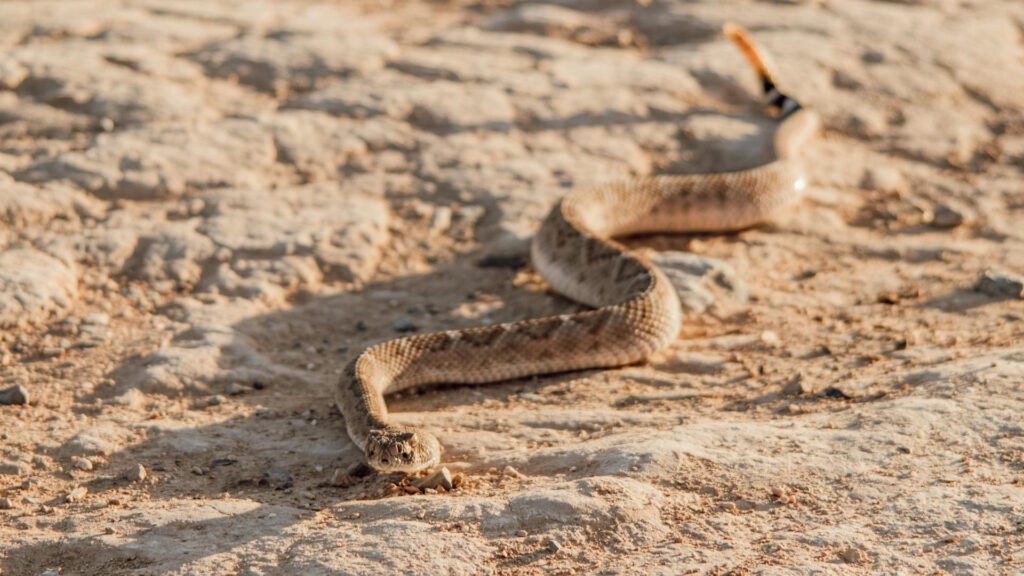
Desert-dwelling snake species require specialized substrates that accommodate their unique environmental needs. For species like sand boas, western hognose snakes, and some gopher snakes, a mixture of play sand and topsoil (approximately 70% soil to 30% sand) provides an ideal compromise that allows for natural burrowing while minimizing impaction risks compared to pure sand. Excavator clay, a specialized reptile substrate that can be moistened and then hardens as it dries, enables keepers to create stable tunnels and burrows that won’t collapse, closely mimicking the natural habitat of many desert species. For particularly sensitive arid species, reptile-specific clay substrates like Zoo Med’s Excavator or Exo Terra’s Desert Sand provide the benefits of a naturalistic appearance without the dangers of calcium-based sands. Whatever substrate is chosen for arid species, providing a humidity retreat with moistened moss in a hide box remains essential for proper shedding despite the otherwise dry environment.
Humidity Management with Different Substrates
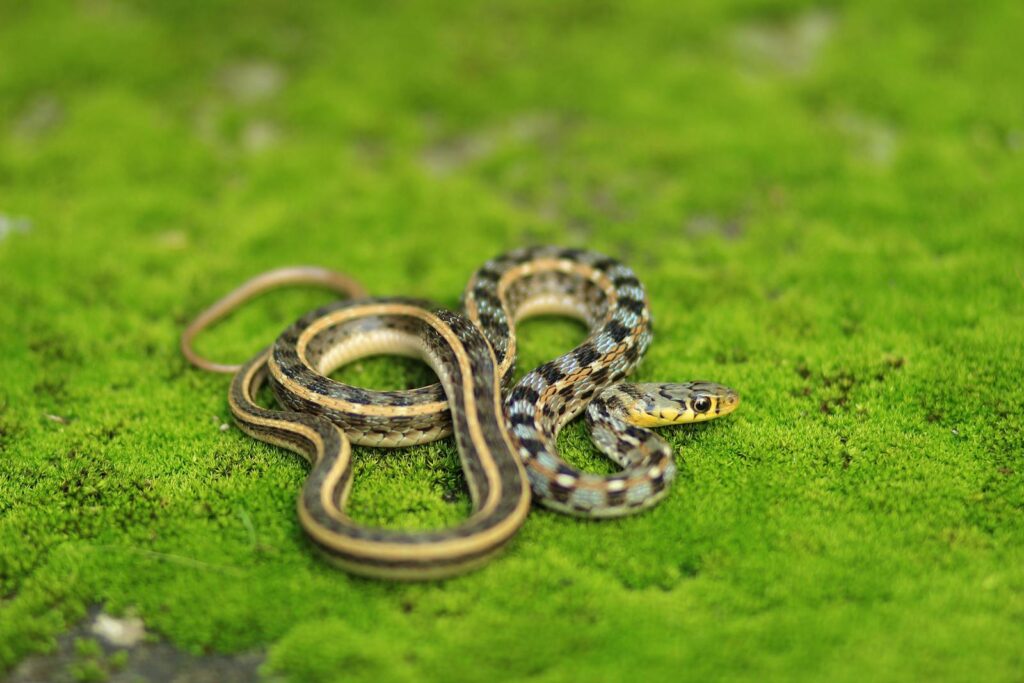
Managing humidity effectively through substrate selection and maintenance proves crucial for snake health and proper shedding. Different substrates have varying moisture retention capabilities—coconut products and cypress mulch excel at high humidity maintenance, while aspen and paper products remain better suited for drier environments. For species requiring high humidity, periodically misting the substrate or adding water directly to the bottom layers while leaving the top layer drier can create an ideal humidity gradient. This approach allows the snake to select its preferred microclimate while reducing the risk of scale rot from constant contact with wet substrate. Regular monitoring with a hygrometer becomes essential, as substrate moisture levels need adjustment based on seasonal changes in ambient humidity. For challenging species with specific humidity requirements, combining substrate types can prove effective—for example, using moisture-retaining cypress mulch in one area of the enclosure while maintaining drier aspen in another allows the snake to self-regulate its exposure to humidity.
Substrate Depth Considerations
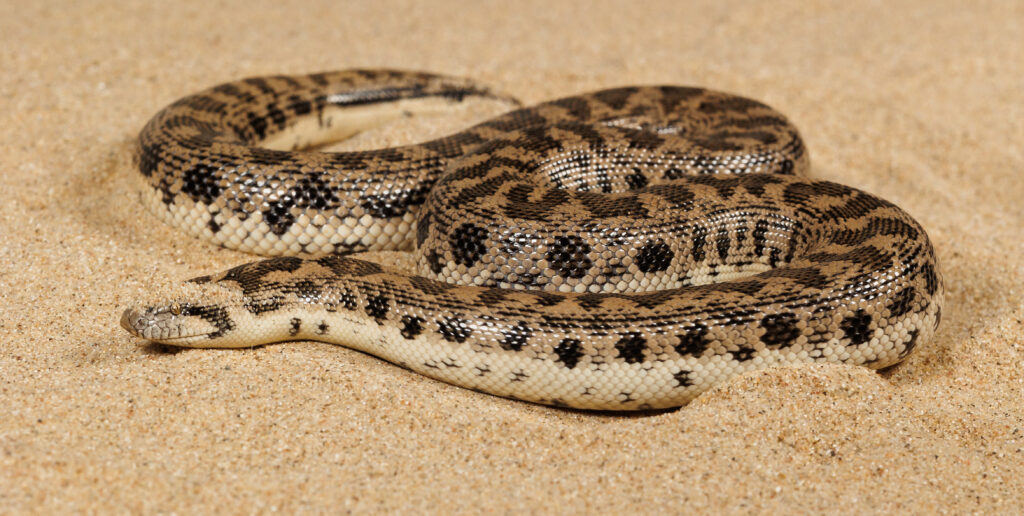
The appropriate depth of substrate in a snake enclosure varies significantly based on species, age, and natural behaviors. Burrowing species like sand boas, rosy boas, and hognose snakes benefit from deeper substrate layers of 3-6 inches that allow them to fully submerge themselves, which reduces stress and promotes natural behaviors. For arboreal or semi-arboreal species that rarely interact with the ground, such as green tree pythons or emerald tree boas, a minimal substrate layer of 1-2 inches provides sufficient absorption without wasting resources. Juvenile snakes generally require less substrate depth than adults, though they often engage in more active burrowing behaviors. The enclosure size also influences optimal substrate depth—larger enclosures may benefit from varied depths to create microclimates and behavioral enrichment zones. For bioactive setups, deeper substrate (4+ inches) becomes necessary to accommodate the root systems of live plants and provide sufficient space for beneficial microorganisms to establish their colonies.
Maintenance and Replacement Schedules
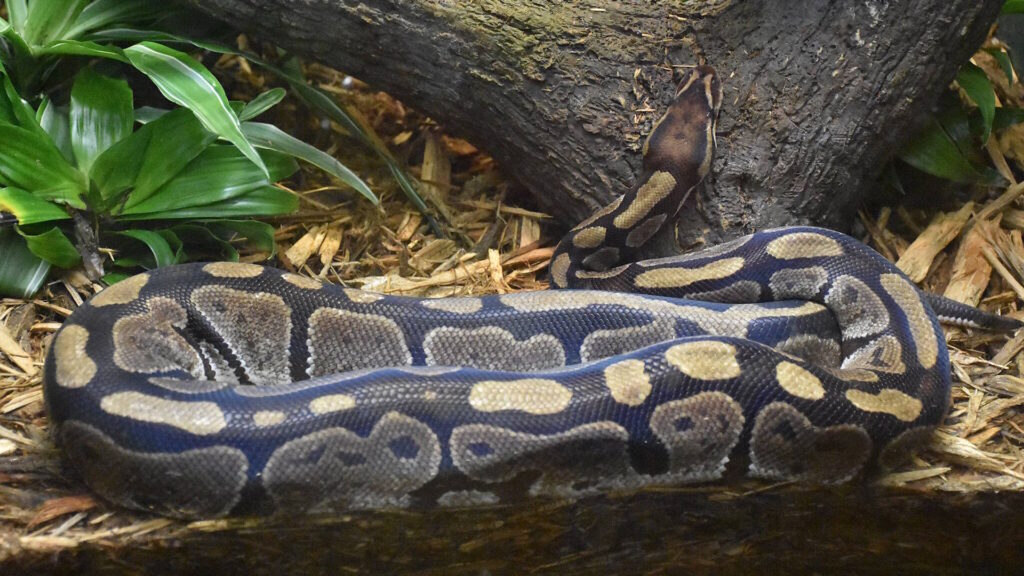
Establishing an effective maintenance routine for snake enclosure substrates directly impacts both animal health and keeper convenience. Daily spot cleaning of visible waste and soiled substrate portions should be performed regardless of substrate type, using reptile-safe cleaning tools to remove feces, urates, and shed skin. Complete substrate replacement schedules vary dramatically by material—paper products typically require weekly changes, while high-quality reptile substrates like coconut husk or cypress mulch might only need full replacement every 2-3 months with proper spot cleaning. Bioactive substrates represent the least maintenance-intensive option, often functioning effectively for 6-12 months before requiring partial refreshing rather than complete replacement. Signs indicating premature substrate replacement include persistent odors despite spot cleaning, visible mold growth, excessive substrate breakdown, or unexplained behavioral changes in your snake. Maintaining a cleaning schedule in your reptile husbandry records helps track patterns and optimize your maintenance routine for both animal welfare and practical convenience.
Cost Considerations and Value Analysis
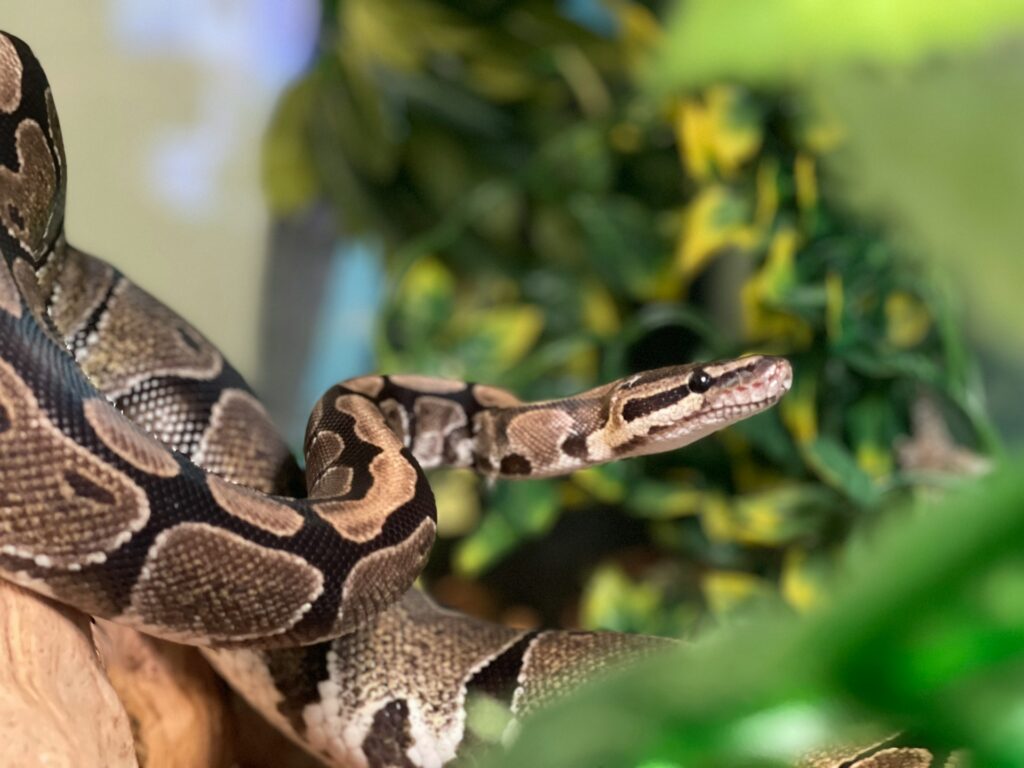
When evaluating substrate options, considering both initial and long-term costs provides a more accurate picture of true value. Paper-based substrates present the lowest initial investment but require frequent complete replacement, potentially costing more over time than premium options. Mid-range options like aspen shavings and cypress mulch offer reasonable initial costs with moderate replacement intervals, striking a balance between upfront expense and longevity. Premium substrates such as coconut-based products and bioactive setups involve higher initial investments but typically last significantly longer, often proving more economical over several months or years of keeping. When calculating substrate costs, factors beyond purchase price should be considered—including the time value of maintenance, disposal requirements, and potential health benefits that might reduce veterinary expenses. For keepers maintaining multiple enclosures, buying substrate in bulk significantly reduces per-unit costs, though proper storage becomes essential to prevent contamination or degradation of unused material.
Conclusion
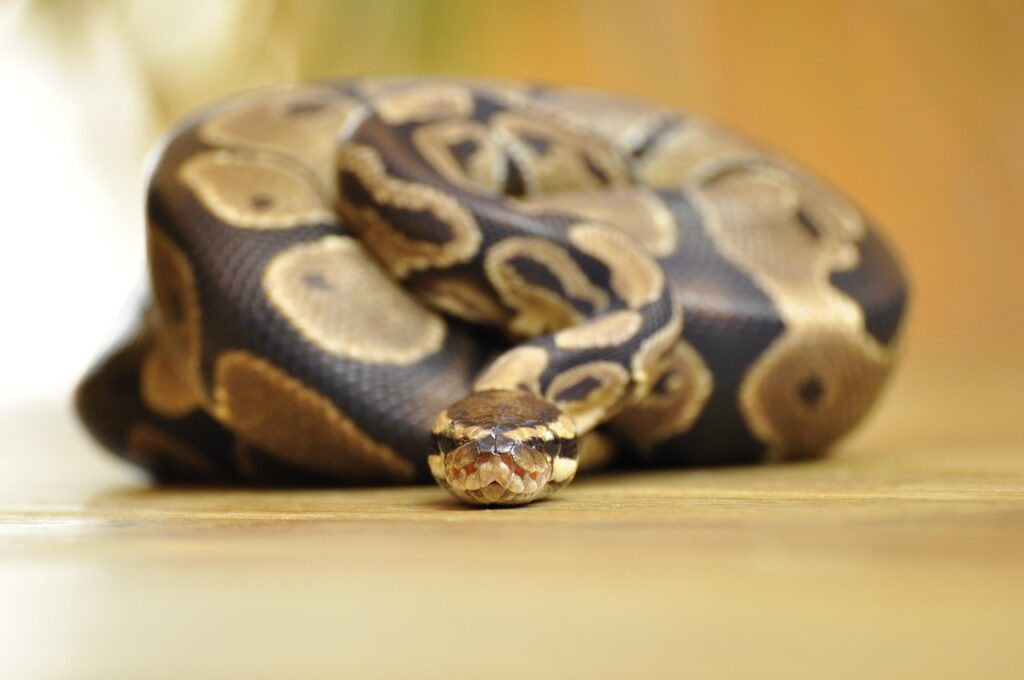
Selecting the right substrate for your non-venomous snake represents a critical husbandry decision that directly impacts your pet’s health, behavior, and overall well-being. While no single “perfect” substrate exists for all species, understanding the specific needs of your snake in terms of humidity requirements, burrowing behaviors, and natural habitat allows you to make an informed choice. Whether you opt for the simplicity of paper products, the natural appeal of wood-based substrates, or the ecological balance of a bioactive setup, regular maintenance and attentive observation of your snake’s interaction with its substrate remain essential. By prioritizing your snake’s physiological needs while balancing practical considerations like maintenance requirements and cost, you can create an enclosure environment that supports not just survival, but thriving health for your reptilian companion.

